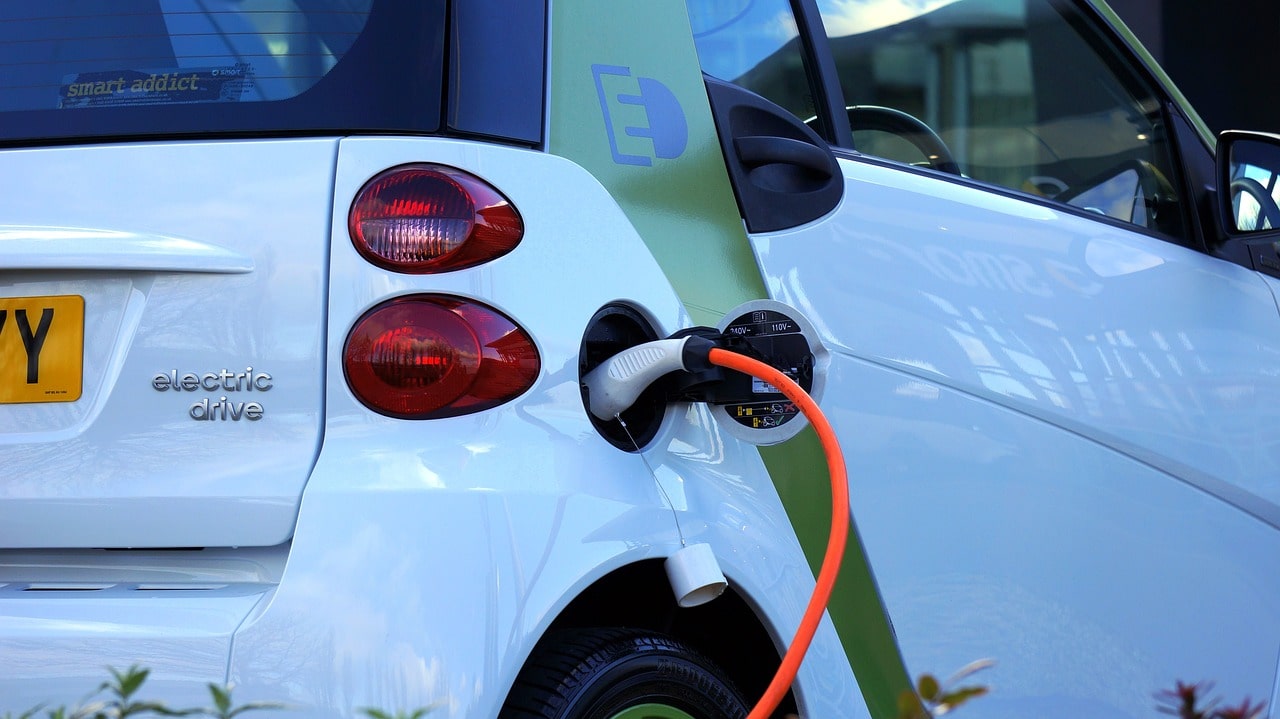
A car that relies on one or even more electric motors for movement is known as an electric vehicle (EV). It can be driven independently by a battery, a collector system, or electricity from extravehicular sources (sometimes charged by solar panels, or by converting fuel to electricity using fuel cells or a generator). Road and rail vehicles, surface and underwater watercraft, electric airplanes, and electric spacecraft are all examples of EVs. For road vehicles, EVs form a future mobility vision known as Connected, Autonomous, Shared, and Electric (CASE) Mobility along with other upcoming automotive technologies including autonomous vehicles, connected cars, and shared mobility.
Read: Top 10 New Technology Trends for 2023
What is an EV (Electric Vehicle)
Electric vehicles (EVs) first appeared in the late 19th century when electricity was one of the preferred forms of motor vehicle power, offering a comfort level and ease of use that gasoline cars of the day were unable to match. For almost 100 years, internal combustion engines predominated as the primary means of propulsion for cars and trucks, but electric power remained prevalent in other kinds of vehicles, such as trains and smaller vehicles of all kinds.
The EV market is being supported by governments around the globe through subsidies and regulations, and customers are demanding low-emission commuting over the fossil fuel-powered vehicles that are destroying the environment.
Due to the first EVs’ extremely expensive starting price, limited battery range, slow speed, and minimal environmental concerns, the industry did not take off. Yet, over the past ten years, there has been a great deal of interest amongst original equipment manufacturers (OEMs), consumers, and governments, leading to significant expenditures in EV manufacturing and battery technology and the sale of millions of vehicles in numerous nations.
All of the major global and Indian OEMs have made investments in and launched EVs, while many new OEMs have drawn significant funding and introduced enormously successful models, boosting demand for EVs and resulting in the creation of unicorns.
How do Electric Vehicles (EVs) work?
EVs operate similarly to automated vehicles. A forward and a reverse mode are available. The following things happen when you put the car in gear and depress the accelerator pedal:
- For the electric motor, power is transferred from the DC battery to AC.
- The controller receives a signal from the accelerator pedal and modifies the frequency of the AC power from the inverter to the motor to change the speed of the vehicle.
- Through a cog, the motor is connected to and rotates the wheels.
- The motor transforms into an alternator and generates power, which is then delivered back to the battery when the brakes are applied or the vehicle is slowing down.
Electric vehicles and AC/DC
Alternating Current is referred to as AC. Similar to a clock’s pendulum, the direction of the electricity in AC changes at a predetermined frequency.
Direct Current is referred to as DC. DC only allows for one direction of current flow: from positive to negative.
How Do EV Chargers Operate?
The EV charger is, at its most basic level, a device that functions just like any other appliance or item that can be charged by putting it in the wall: it draws an electrical charge from either a 240v outlet or the grid to which it is connected and distributes that charge to the automobile.
Future of Electric Vehicles in India
The majority of Indian customers think an electric vehicle would be ready by 2023, but they also think it won’t be readily available until 2025. While the average retail price for EVs globally is $36,000, Indian consumers are seeking a lower pricing than those in other nations (around Rs27 lakh).
Globally, lithium-ion batteries cost about $250/kWh, which amounts to about Rs 5.7 lakh only in battery costs. An electric vehicle now costs more than a conventional vehicle since lithium-ion batteries make up half of their price.
Li-ion batteries are hindered by the security of the battery against explosion. For EVs in India, charging presents a big challenge, and a dearth of charging stations may also be taken into account, making them unsuitable or much less suitable for long-distance travel.
Some EVs also have slower speeds compared to standard gas engines.
India could take the lead by switching to EV mobility at this crucial time, when many countries are fighting to free Mother Earth from the grip of carbon emissions and CO2, giving the nation a greener and cleaner ecology.
Infrastructure for charging electric vehicles
Currently, if someone needs to go a long distance due to their electric vehicle’s low charge. He has very few alternatives for recharging. There are 718 districts and about 70,000 gas stations in India.
Almost every 5 to 6 kilometers is a petrol station. There are just 300 electric vehicle charging stations on the other side. In such a situation, a person operating an electric vehicle will experience a challenging journey.
The government is addressing this issue, but progress is being made slowly.
1- Higher Costs
If someone wants to purchase a Maruti Suzuki Swift, a medium-sized car, in India. The on-road cost of the car in the gasoline version is about 6-7 lakhs. The starting price of a Tesla electric car in India is 60 lakhs, however.
India is a price-sensitive market, so an affordable shift to e-vehicles is essential if it is to be successful.
2- Inadequate Skilled Workforce
India faces a workforce crisis for the production of electric vehicles. Leading academic institutions have no way to change the rapidly evolving EV technology in the world because it is new.
3- Limited Technology
India has a significant technology conundrum. The standard Maruti Suzuki Swift Petrol car has a 40-liter fuel tank. If the car gets 15 km per liter of fuel, it can travel up to 600 kilometers.
In the same way, will a fully charged car travel the same distance in terms of technology? In India, Ather is a well-known EV manufacturer. The company claims that on Indian highways, it can drive up to 120 kilometers on a single charge.
Conclusion
Future-proof electric vehicles are here to stay! Manufacturing companies are working harder to make the switch to electric vehicles from conventional cars. Possessing an electric car with the proper level of functioning and infrastructure has several benefits.








